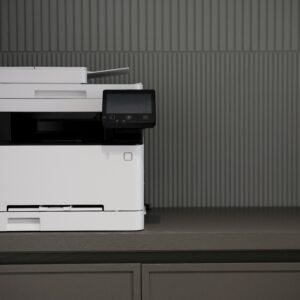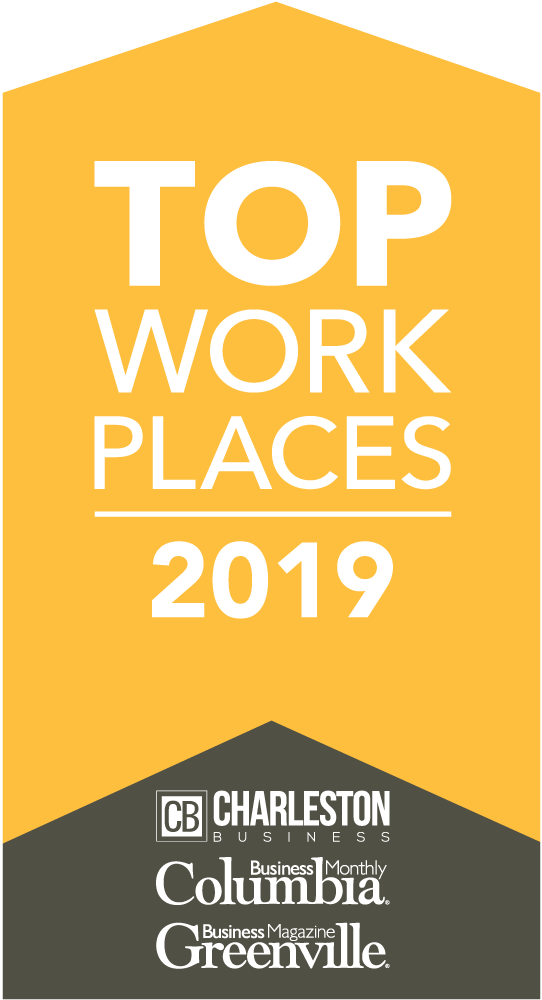At GOS, we know it’s important that your workplace reflects your business culture and values. Healthy snacks, nifty office supplies and yummy beverages can make your employees smile, but don’t forget about furniture and office design! Often overlooked, these have a major impact on your employees’ health and productivity.
Looking to redesign or update your office layout? Read on to learn 7 tips from our interior designers, including how to get started, what to expect and what pitfalls to avoid when tackling an office design project.
1. Why should my company work with an interior designer?
Office design is more than selecting snazzy chairs and funky desks. Do you know the best lighting scheme to reduce eye strain, or the most fitting wall color to promote productivity?
Office interior designers, like the in-house experts at GOS, are specifically trained in creating workspaces that are functional and stylish. They know exactly how to create environments to enhance workflow and accessibility, maximize space, and create happy employees, examining factors like lighting, colors, furniture, ergonomics and layout. They use their skills, experience and creativity to create designs that incorporate your culture and style, while solving your biggest office space dilemmas.
A well-trained office designer also saves you precious time, money and stress by handling all the moving pieces of a redesign project. They carefully consider your company’s needs and budget to create more effective spaces. Plus, when you select a premium design company and furniture dealer, such as GOS, you cut out the middleman and get the best deals on office furniture.
2. What should I look for in an interior design company?
Here are a few recommendations for finding the best office interior design team and what they should provide:
- Find an office designer who will carefully listen to your problems, ask thought-provoking questions about your company, and respect your budget. Make sure they take detailed site measurements and discuss schematic programming – aka, where they learn the specifics about your aesthetics, needs and goals.
- Once a designer understands your concept, they will begin planning your design to fit within your floor plan (space planning). A designer should then provide a design packet or design boards, that includes detailed furniture layouts, 3D space renderings, materials and textures, shapes, finishes, styles, and color palettes.
- If you’re not ready to begin a redesign but want to start planning and gathering quotes, a good designer can help with budgeting exercises and provide furniture mockups to give you an idea of what to expect down the road.
- Once you approve a concept, the designer should present quotes, provide proposals, and guide you through the ordering process. A skilled designer will keep you informed and updated of progress throughout the entire process.
- Lastly, when your design is ready to execute, a designer should monitor delivery, install all furniture, test appliances, dispose of existing office furniture and trash, and handle any damaged or missing items, along with related replacement plans. Bonus points to the designer who handles all service and warranty work for the life of your products and materials.
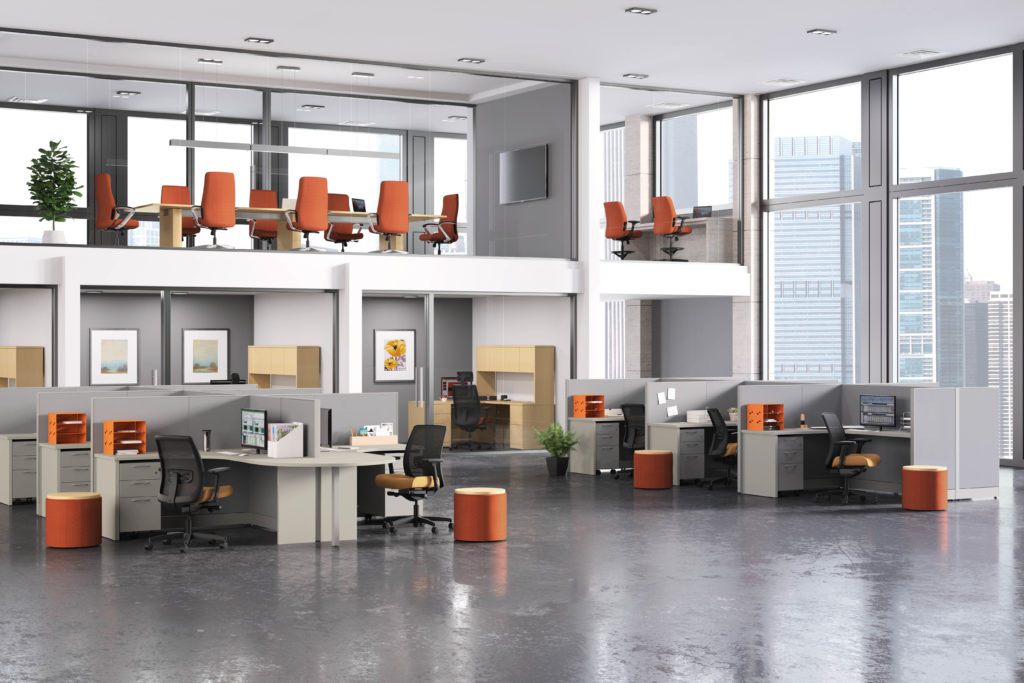
3. Why should I care about color, lighting or furniture in my office?
How your office is designed can impact everything from accessibility to workflow to employee health and retention. But why care about these things? Allow us to explain.
- Furniture is important because it defines the purpose of an area. It also enhances your aesthetics and style, creating a lasting impression. But most importantly, furniture impacts employee wellness and comfort. Who doesn’t want a satisfied and happy team? Quality, ergonomic furniture supports proper posture and movement, reducing the risk of joint pain, back and neck pain, and more. We’ve explained the importance of ergonomic furniture and employee health more below.
- Why does color choice matter? A wall is a wall, right? Color can greatly impact employee productivity and wellness, as well as influence your customer’s perception of your company. Color affects mood, productivity and emotions. For example, the right blue or yellow paint on the wall or in employee cubicles can create huge leaps in productivity and alertness.
- Why does it matter where we place cubicles, conference tables or a lounge area? Layout is important because it promotes function and workflow, and designates where working, eating and lounging will take place. Smart layout allows an employee to work effectively in their space. It also can improve workplace privacy, acoustics, accessibility and more.
- I have plenty of neon, overhead lighting. Isn’t that enough? Lighting is important because it promotes productivity and wellness. Studies show that employees who work by windows or have access to ample natural light are more alert and motivated. Adequate lighting also reduces eye fatigue and neck strain. Designers know what type of lighting to use and where to place it for maximum efficiency.
4. How do I know it’s time to redesign my office? What are the signs my company needs interior design help?
One of the most obvious signs that your company is ready for a redesign is old or worn-out furniture. Furniture sets the tone for your workspace. You may have windows boasting the most attractive view or the most striking interior architecture around, but none of that matters when a customer sees old furniture that is uncomfortable or broken. We live in a world driven by first impressions, and an outdated office can turn away customers before you even begin your meeting.
Another obvious sign it’s time to redesign is company growth, downsizing, or new health and safety precautions. For example, if your team will be working remotely a portion of the time, you may no longer need large cubicles for everyday use. Or perhaps you need to update your office layout to accommodate new safety measures and social distancing for collaborative work and customer meetings. When your company is looking at a large-scale change, your space will likely require changes, as well.
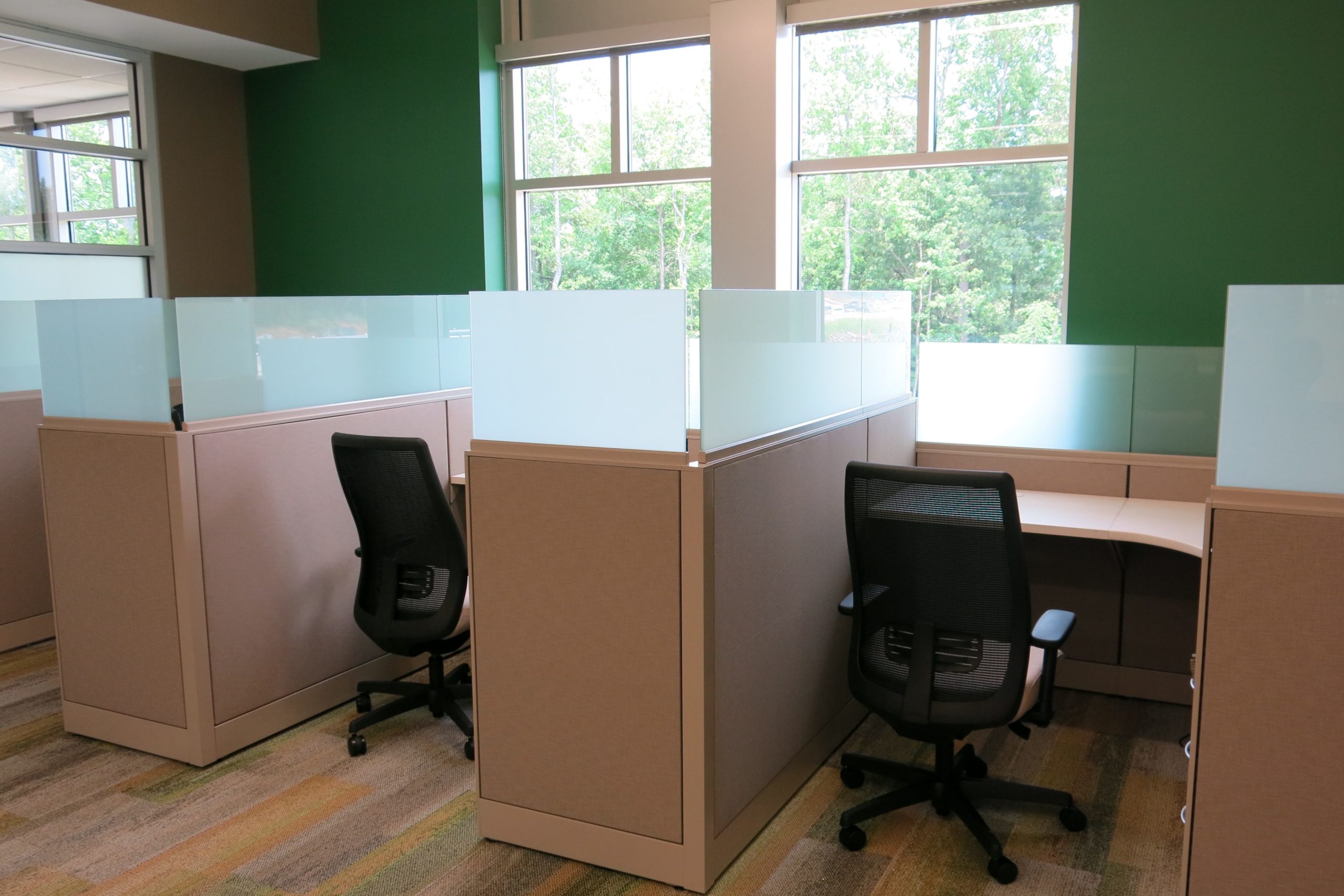
Lastly, and most importantly, is the impact your design has on your employees’ health. A few simple upgrades to office furniture and layout can greatly affect your team’s overall wellness, productivity, and even employee retention. If your team is complaining about sore necks, backs and knees, or tired eyes, it’s time to upgrade your office furniture, lighting and layout.
Over the past few decades, there have been vast improvements in furniture ergonomics – in other words, how furniture is designed to support human function and comfort. Ergonomic furniture can reduce the risk of musculoskeletal problems, joint pain, back and neck pain, arthritis, and even blood pressure. Employees need furniture, especially chairs, that support and uniquely fit their bodies. Tip: Start by upgrading your office chairs – your employees will thank you!
Proper office lighting strategically placed in around your office, such as task lights and natural light, can alleviate eye strain and help your team maintain focus. Movement is another important factor to help your teams maintain health. Sit-to-stand desks or desk risers can promote better health and help your team avoid the effects of long-term sitting.
5. What is the biggest mistake companies make when redesigning an office on their own?
According to our interior designers, the biggest mistake companies make when they try to DIY office design is poor furniture quality. At GOS, we get calls from clients who say they ordered new furniture only a few years ago, who now need our help and design services because their furniture is falling apart and can’t withstand everyday use.
For office settings, companies need to make sure they are installing commercial grade furniture to withstand the test of time. This is what a skilled interior designer at GOS can help you procure. We understand tight budgets and do all we can to provide quality products. However, if you have to sacrifice quality for cost, we’ll make sure to explain what you are getting and what to expect. (A lifetime warranty comes with most of our manufacturers, which doesn’t hurt either.)
Another mistake companies often make, is underestimating the installation and assembly time required for new office furniture or equipment. Desks and chairs may look attractive on Wayfair or Amazon, but require hours of complicated assembly, oftentimes leading to unwanted hiccups later on. When you work with a professional office designer, they can assemble ahead of time so you don’t lose work time or risk improper installation.
6. What is least important to remember when redesigning an office?
The least important factor in a redesign are the furniture finishes. Don’t get hung up on these details when making design decisions. The bigger elements (layout, furniture, budget) are more crucial to get your redesign underway.
The overall aesthetic and tone of the space is important (and yes, details matter!), but furniture finishes should be lower on your list of priorities. Good office interior designers, like ours at GOS, focus on design and functionality first, furniture second, and finishes last. However, this doesn’t mean you should forget about it! Manufacturers have endless finishes, colors and options, and skilled designers will work with you to find the perfect finish.
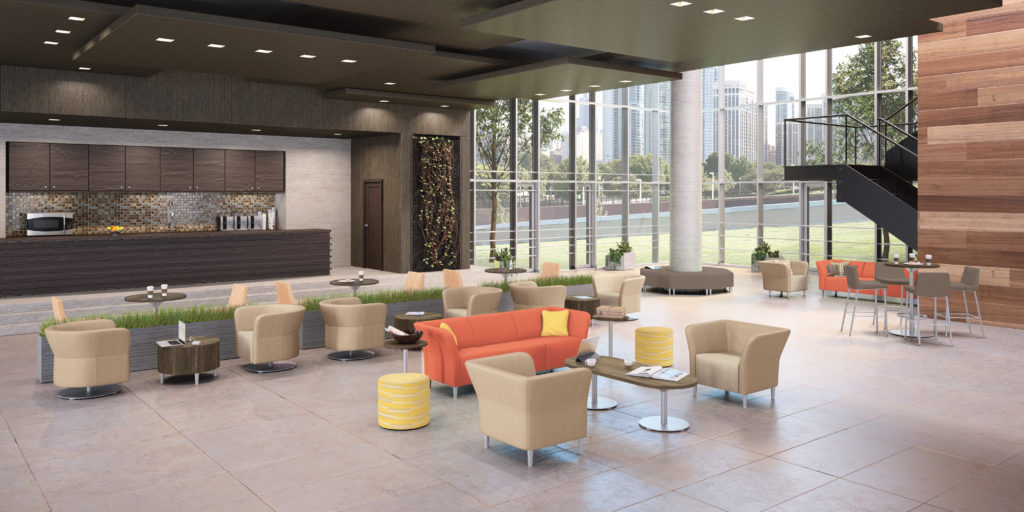
7. What is most important to remember when redesigning an office?
Without a doubt, the most important factor in design is functionality. Good design must be functional; it must enhance company operations, address gaps in workflow, maintain accessibility and make sense for your needs and space. It should not create more issues and hurdles for your employees or customers. For example, an office can be beautiful, but without enough egress around cubicles (aka, walking space) or privacy for important meetings, you’re only creating more problems for your team.
Lastly, align your expectations with your budget. Designers want to make your office as appealing as possible. They want to make sure your money is well-spent. Be upfront with what you can afford at the beginning of an office redesign. This will save you time and money in the long-run, reducing design revisions and repricing during the project.


